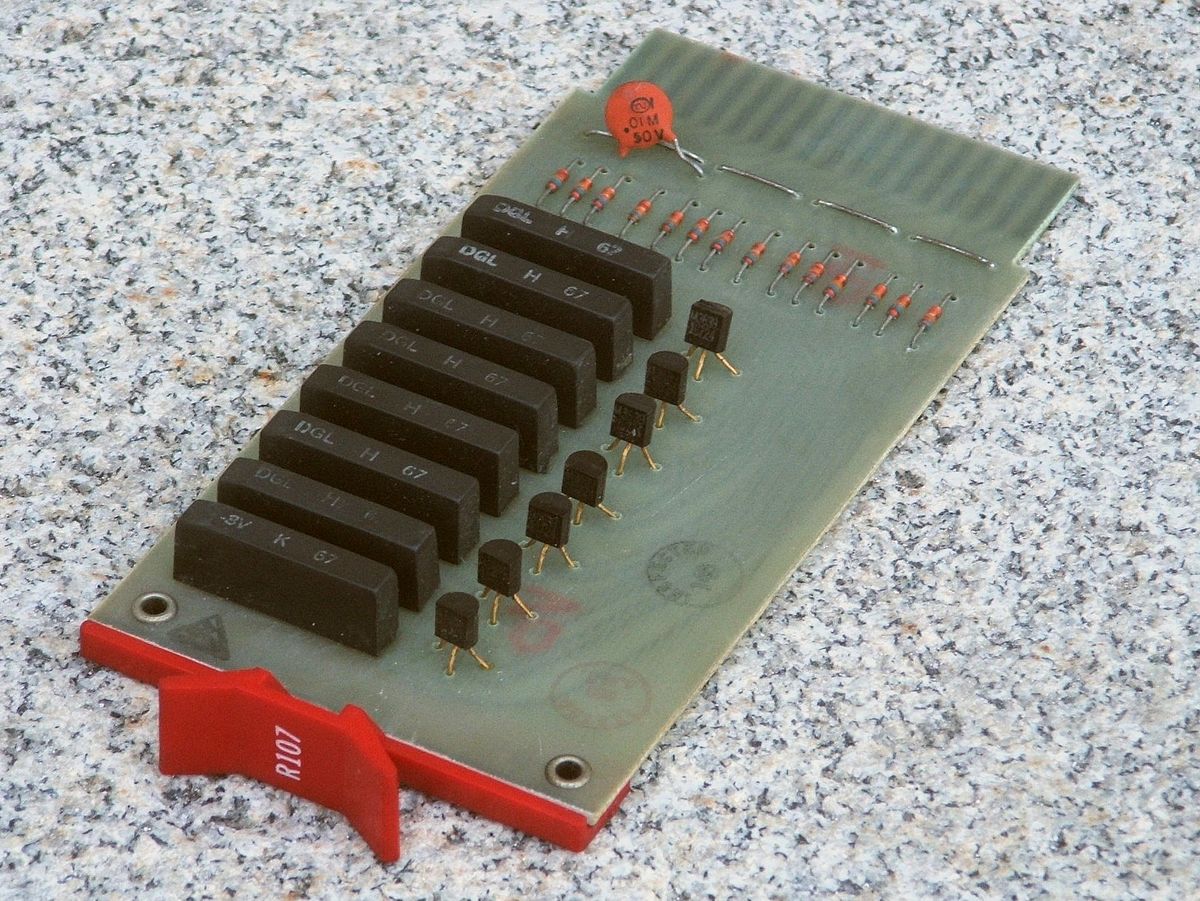Yes, at a physical level there was some commonality, but not at as high a level the question references.
In the mid 1960s, DEC sold a line of simple logic modules, known as flip chips. The PDP-7 and the original PDP-8 were built (at least partially) out of the R-series modules, though there may have been some custom modules created just for them. These were interconnected through a wire-wrap backplane, as illustrated
These modules preformed fairly simple logic function, for example a R107 module implemented seven inverters (i.e. NOT gates) using discrete transistors. You can find the datasheets and documentation for the flip-chip modules in the Digital Logic Handbook.
Later versions of PDP-8 systems were more integrated, with more functionality on one custom board, and as integrated circuit technology developed, a SSI digital logic chips could do everything a flip-chip could, in much less space. For comparison, a SN7404 IC implemented a six bit inverter function similar to the R107 flip-chip.
By 1969, new DEC designs began using integrated circuits rather than the discrete transistors of the older flip chip modules. The modules however remained in use for some time after this. If memory serves, the early PDP-10 and PDP-11 models also used the red-handled R-series modules as well. Those machines were in use well into the 1970s and early 1980s, so spare modules for repair were common.
Sometimes just reseating or cleaning the contacts on a module's card edge connector would fix a problem, the modules were fairly robust, and a Pink Pearl brand pencil eraser was commonly used for cleaning (with modules removed from the backplane.)